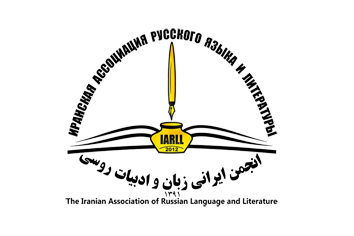SPECIAL FEATURES OF THE DISCOURSE OF MAGAZINES FOR WOMEN AND MEN
DOI:
https://doi.org/10.61186/iarll.24.6Keywords:
Media Discourse, Magazine, Headline, Gender, StereotypeAbstract
Glossy magazines typically cater to one gender or the other, conveying specific information about the roles of men and women in society. Our interest lies in uncovering insights about modern Russian society through the study of these magazines. While the discourse of women's and men's magazines has been previously analyzed in Russian scholarship, our study offers a unique perspective. First, we equally focused on both women's and men's magazines. Second, we employed a cognitive linguistics methodology to explore the cognitive structures underlying text generation. The purpose of this study was to identify the linguistic features that represent gender stereotypes. We analyzed 150 headlines from Russian men's and women's online magazines published in 2023. Our research procedure involved determining the relevance of specific topics, followed by a lexical-grammatical analysis of each headline. Finally, we conducted a contextual analysis to examine the sociocultural context in which these texts were generated. Our findings reveal that publications aimed at women are more focused on themes of appearance and beauty, while men's publications emphasize self-development and acquiring new knowledge. Men's magazines tend to use more technical vocabulary and professional terms, with headlines that are straightforward and informative. In contrast, women's headlines are often more descriptive and emotionally charged. Notably, we observed both the reinforcement of existing gender stereotypes and their deconstruction; for instance, men are no longer expected to be cold-blooded and restrained, while articles about careers and the latest technologies appear more frequently in women's publications.
Extended abstract:
The purpose of the study was to identify the peculiarities of the discourse in magazines targeted at men and women. The sources for analysis were Russian online magazines, including The Symbol, Rules of Life, Voice, Men Today, New Hearth, Maxim, Marie Claire, BroDude, Grazia, and TrendyMen, all published in 2023. Using a continuous sampling method, the authors selected 150 headlines for analysis. The analysis procedure consisted of three stages. First, the authors determined the frequency of specific topics covered by each publication. Second, they analyzed each headline at the lexical and grammatical levels. Third, the authors conducted a contextual analysis, considering the socio-cultural context in which the analyzed texts were produced.
The study revealed several similarities in the discourse of magazines for men and women. From the perspective of cognitive structures underlying text generation, it can be argued that there are common themes relevant to both genders. These include fashion and style, psychology and relationships, technology, finance, and health.
At the lexical-semantic level, similarities were also observed in the headlines of men's and women's online magazines. Both discourses employ figurative vocabulary and emotionally charged words to attract readers' attention. Additionally, headlines in both men's and women's magazines are often formulated as practical advice in areas such as health, career, or personal life.
The study also identified a number of differences. Technical vocabulary and terminology are more frequently used in publications for men. Women's headlines, on the other hand, tend to feature more emotional vocabulary related to human relationships and appearance. Men's headlines often adopt a straightforward, informative style, while women's headlines are more descriptive and written in a more ornate manner.
From the perspective of gender stereotypes, the study found both the reinforcement and the dismantling of societal norms. Women's publications often reinforce the idea that women should be beautiful, sensitive, caring, and knowledgeable about fashion and beauty trends. Conversely, men's publications emphasize that men should be strong, goal-oriented, technically skilled, and successful in their careers. However, a new approach to men's psychology is emerging. Men are no longer expected to be cold-blooded and emotionally restrained in all situations. The presence of numerous headlines about psychology in men's magazines suggests that men, like women, have the right to express emotional vulnerability. At the same time, women's publications increasingly feature articles about careers, technology, and budgeting, challenging the stereotype that women should focus solely on beauty and family.
Downloads
Published
How to Cite
Issue
Section
License
Copyright (c) 2024 Issledovatel'skiy Zhurnal Russkogo Yazyka I Literatury

This work is licensed under a Creative Commons Attribution 4.0 International License.
![]()
"Creative Commons Attribution 4.0 International (CC-BY 4.0)"


